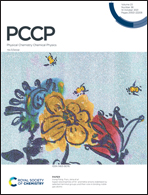Enhancing the Curie temperature of two-dimensional monolayer CrI3 by introducing I-vacancies and interstitial H-atoms
Abstract
The discovery of two-dimensional monolayer CrI3 provides a promising possibility for developing spintronic devices. However, the low Curie temperature is an obstacle for practical applications. Here, based on the consideration of the superexchange interaction of ferromagnetic coupling, we investigate the effect of introducing I-vacancies and interstitial H-atoms on the Curie temperature of monolayer CrI3 by using first-principles calculations and Monte Carlo simulations. Our theoretical conclusions show that the Curie temperature of Cr8I23 (CrI2.875), Cr8I22 (CrI2.75) and Cr8I24H (CrI3H0.125) significantly increases to 97.0, 82.5 and 112.4 K, respectively. Moreover, the magnetic moment of the Cr atom increases from 3.10 to 3.45 and 3.46μB in monolayers Cr8I23 and Cr8I22, respectively. We provide more alternative approaches to effectively enhance the Curie temperature of monolayer CrI3, which will help both theoretical and experimental researchers to directly predict the change in Curie temperature of CrI3 and its analogs through structural information.



 Please wait while we load your content...
Please wait while we load your content...